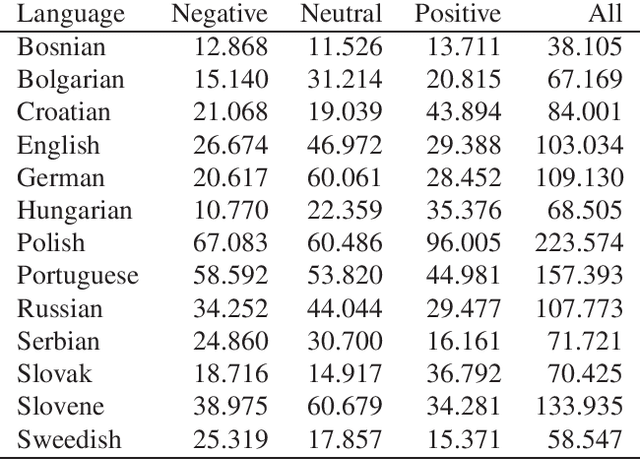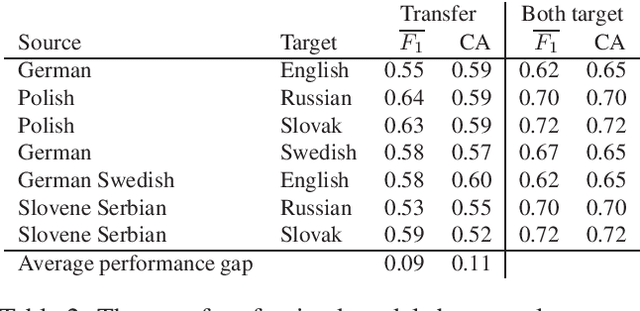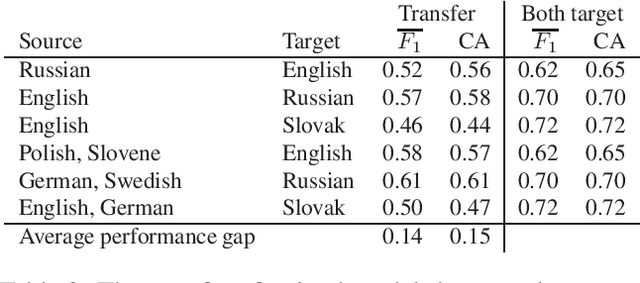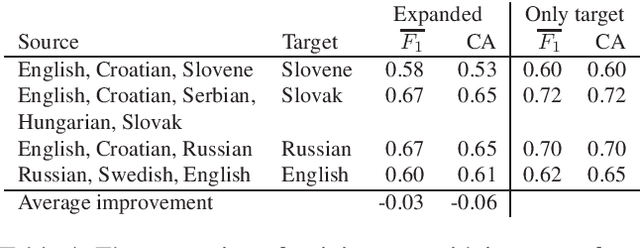Cross-lingual Transfer of Twitter Sentiment Models Using a Common Vector Space
Paper and Code
May 18, 2020



Word embeddings represent words in a numeric space in such a way that semantic relations between words are encoded as distances and directions in the vector space. Cross-lingual word embeddings map words from one language to the vector space of another language, or words from multiple languages to the same vector space where similar words are aligned. Cross-lingual embeddings can be used to transfer machine learning models between languages and thereby compensate for insufficient data in less-resourced languages. We use cross-lingual word embeddings to transfer machine learning prediction models for Twitter sentiment between 13 languages. We focus on two transfer mechanisms using the joint numerical space for many languages as implemented in the LASER library: the transfer of trained models, and expansion of training sets with instances from other languages. Our experiments show that the transfer of models between similar languages is sensible, while dataset expansion did not increase the predictive performance.
 Add to Chrome
Add to Chrome Add to Firefox
Add to Firefox Add to Edge
Add to Edge